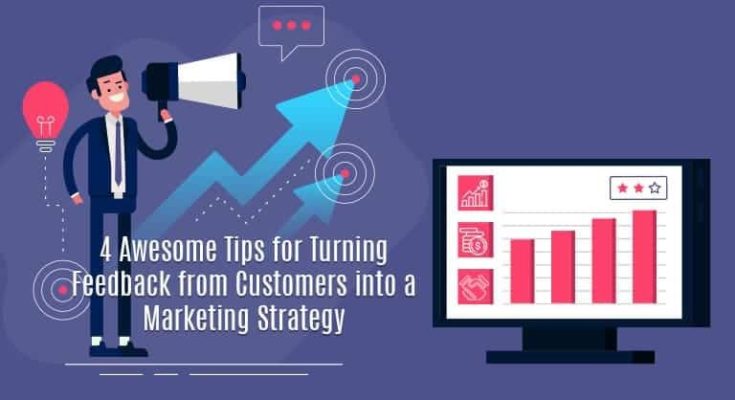In the dynamic and hyper-competitive landscape of modern business, simply having a great product or service is no longer enough to guarantee sustained success. Companies that consistently outperform their rivals are those that don’t just *listen* to their customers but actively *leverage* their insights to fuel innovation, refine offerings, and cultivate unwavering loyalty. Customer feedback, far from being a mere formality, is a goldmine of actionable intelligence, a powerful engine that, when properly harnessed, can drive exponential growth. The true artistry lies in transforming raw opinions, suggestions, and critiques into tangible strategies that enhance the customer experience, optimize operations, and unlock new market opportunities.
The journey of turning customer feedback into growth begins with a **systematic and multi-channel approach to collection**. It’s no longer sufficient to just send out an annual survey. Businesses must actively solicit feedback at every stage of the customer journey, from pre-purchase interactions to post-purchase support. This involves utilizing a diverse array of tools and touchpoints:
* **Surveys:** Short, targeted surveys after a purchase, service interaction, or website visit (e.g., Net Promoter Score (NPS), Customer Satisfaction Score (CSAT)).
* **Direct Communication Channels:** Accessible customer service lines, email support, and live chat features where customers can voice concerns or offer suggestions.
* **Social Media Monitoring:** Actively listening to mentions, comments, and reviews across platforms where customers discuss your brand.
* **Online Reviews:** Monitoring and responding to reviews on platforms like Google My Business, Yelp, or industry-specific review sites.
* **User Testing/Usability Studies:** Observing customers interacting with your product or website to identify pain points.
* **Direct Interviews/Focus Groups:** For deeper qualitative insights, engaging directly with a select group of customers.
For a German SaaS company, this might mean not only in-app feedback forms but also robust data privacy-compliant email surveys and dedicated customer success managers actively seeking input during client check-ins, ensuring compliance with local regulations like GDPR. The key is to make it easy and appealing for customers to share their thoughts.
Once collected, the raw feedback must be **organized, analyzed, and synthesized into actionable insights**. This is where the true value extraction occurs. Simply accumulating comments is unproductive; the data needs structure. AI-powered tools, particularly those leveraging Natural Language Processing (NLP), are revolutionizing this phase. They can sift through vast quantities of unstructured text data from reviews, chat transcripts, and social media, identifying recurring themes, sentiment trends (positive, negative, neutral), and emerging pain points that might be difficult for human analysts to spot manually. For instance, if numerous customers mention “slow delivery” or “confusing checkout process,” AI can flag these as critical areas for improvement. Quantitative data from surveys can be segmented by customer demographics, product lines, or service types to identify specific groups with particular needs or frustrations. The goal is to move beyond individual anecdotes to identify patterns and root causes.
The real magic happens when these insights are **translated into tangible improvements and innovations**. This requires a cross-functional approach, ensuring that feedback doesn’t just sit within a customer service department but permeates all relevant areas of the business.
* **Product Development:** If customers consistently request a new feature or complain about a product’s usability, this feedback directly informs the product roadmap and prioritization of development efforts.
* **Service Delivery:** Insights into slow response times or unhelpful policies can lead to training enhancements for customer service teams or a complete overhaul of service protocols.
* **Marketing and Sales:** Understanding customer pain points and their language can refine messaging, create more effective sales collateral, and inform targeted campaigns. If customers frequently ask about a specific product benefit, marketing can highlight that more prominently.
* **Operational Efficiency:** Feedback about logistical bottlenecks or frustrating processes (e.g., returns) can lead to process re-engineering and automation.
For example, a boutique hotel in Munich receiving consistent feedback about slow Wi-Fi could invest in an infrastructure upgrade, clearly communicating the improvement to guests. This demonstrates responsiveness and directly addresses a pain point, enhancing future guest experiences.
Crucially, **closing the feedback loop** with customers is paramount for building loyalty and encouraging continued engagement. When customers take the time to offer feedback, they expect to be heard and, ideally, see their suggestions lead to change. Even if a specific suggestion cannot be implemented, acknowledging their input and explaining why (or what actions are being taken instead) shows respect. Announcing improvements that were directly inspired by customer feedback—e.g., “Based on your suggestions, we’ve launched our new mobile app with enhanced features!”—reinforces their value to your business. This transparency and responsiveness transform customers from passive consumers into active partners in your growth journey, deepening their trust and emotional investment in your brand.
Finally, integrating customer feedback into a **culture of continuous improvement** is the ultimate goal. Feedback should not be a one-off project but an ongoing, iterative process embedded within the company’s DNA. This means regularly scheduling feedback review meetings, setting clear KPIs for customer satisfaction, empowering employees at all levels to act on customer insights, and fostering an environment where customer-centricity is a core value. Companies that excel in this area view every piece of feedback, positive or negative, as a valuable data point for learning and adaptation. This proactive, customer-obsessed mindset allows businesses to anticipate market shifts, stay ahead of competitors, and forge lasting relationships that drive sustainable, organic growth.
In conclusion, customer feedback is not merely a collection of opinions; it is a strategic asset with immense potential to drive business growth. By implementing systematic collection methods, leveraging intelligent analytics to extract actionable insights, translating those insights into tangible product and service improvements, diligently closing the feedback loop with customers, and embedding this process into a culture of continuous improvement, businesses can transform critiques into catalysts for innovation and loyalty. In a world where customer expectations are constantly rising, the ability to truly listen, learn, and evolve based on customer input will be the defining characteristic of leading companies for years to come.




